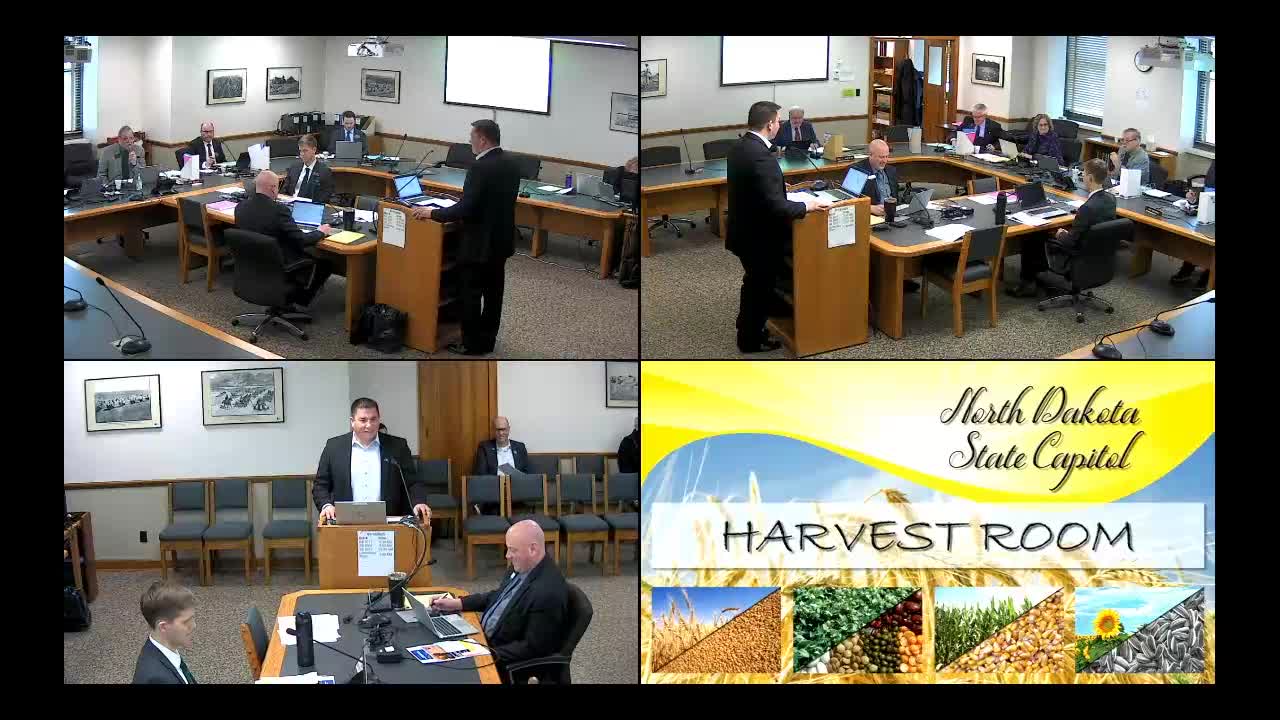Governor Armstrong to unveil budget details amid scrutiny over salary allocations
January 13, 2025 | Appropriations - Human Resources Division, Senate, Legislative, North Dakota
This article was created by AI summarizing key points discussed. AI makes mistakes, so for full details and context, please refer to the video of the full meeting. Please report any errors so we can fix them. Report an error »

In a recent meeting of the Senate Appropriations - Human Resources Division held on January 13, 2025, discussions centered around the upcoming budget release by Governor Armstrong and the implications of proposed salary allocations within the Indian Affairs Commission.
The meeting began with anticipation surrounding Governor Armstrong's budget announcement, which was expected to be finalized that day. This budget is crucial as it sets the financial framework for various state departments and initiatives. The urgency of the discussions highlighted the importance of transparency and clarity in budgetary matters, especially as stakeholders await specific details.
A significant point of discussion arose regarding the proposed allocation of $1 million for salaries and wages for four full-time equivalent positions. Senator Magram raised concerns about the apparent high cost per employee, questioning the breakdown of these funds. The response indicated that the budget not only covers salaries but also includes contractual funds, travel expenses, and office supplies. This clarification is essential for understanding how state resources are allocated and ensuring that funds are used effectively.
Another critical topic was the provision allowing the Indian Affairs Commission to adjust its full-time equivalent positions as needed, depending on available funds. This flexibility is significant as it enables the Commission to respond to changing needs and priorities within the community it serves. However, the implications of such adjustments raise questions about job security and the potential impact on services provided to the public.
Overall, the meeting underscored the importance of detailed budget discussions and the need for clear communication regarding state funding allocations. As the budget is finalized and released, stakeholders will be looking for transparency and accountability in how these funds are managed and utilized. The next steps will involve further analysis of the budget details and ongoing discussions about the implications for state agencies and the communities they serve.
The meeting began with anticipation surrounding Governor Armstrong's budget announcement, which was expected to be finalized that day. This budget is crucial as it sets the financial framework for various state departments and initiatives. The urgency of the discussions highlighted the importance of transparency and clarity in budgetary matters, especially as stakeholders await specific details.
A significant point of discussion arose regarding the proposed allocation of $1 million for salaries and wages for four full-time equivalent positions. Senator Magram raised concerns about the apparent high cost per employee, questioning the breakdown of these funds. The response indicated that the budget not only covers salaries but also includes contractual funds, travel expenses, and office supplies. This clarification is essential for understanding how state resources are allocated and ensuring that funds are used effectively.
Another critical topic was the provision allowing the Indian Affairs Commission to adjust its full-time equivalent positions as needed, depending on available funds. This flexibility is significant as it enables the Commission to respond to changing needs and priorities within the community it serves. However, the implications of such adjustments raise questions about job security and the potential impact on services provided to the public.
Overall, the meeting underscored the importance of detailed budget discussions and the need for clear communication regarding state funding allocations. As the budget is finalized and released, stakeholders will be looking for transparency and accountability in how these funds are managed and utilized. The next steps will involve further analysis of the budget details and ongoing discussions about the implications for state agencies and the communities they serve.
View full meeting
This article is based on a recent meeting—watch the full video and explore the complete transcript for deeper insights into the discussion.
View full meeting
